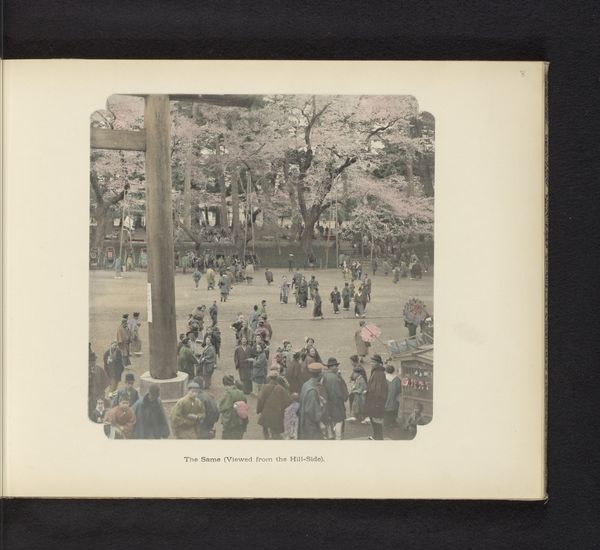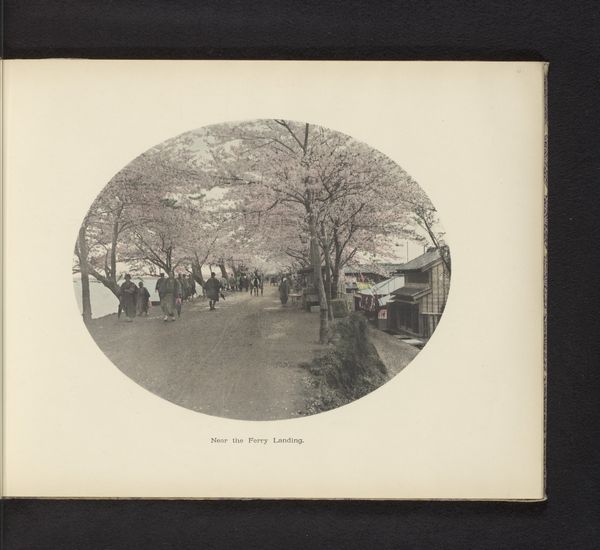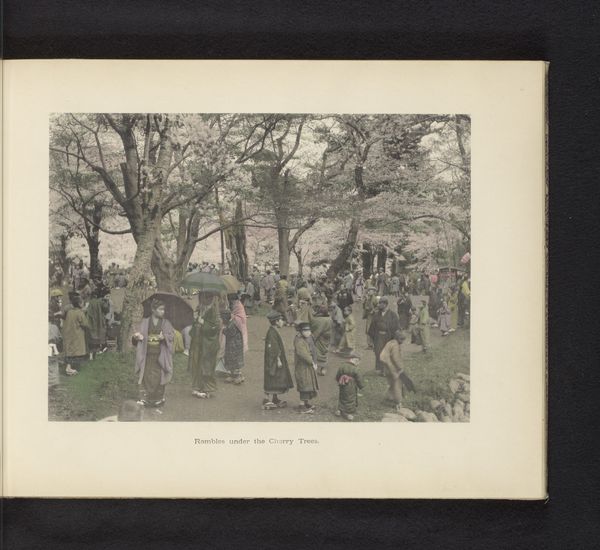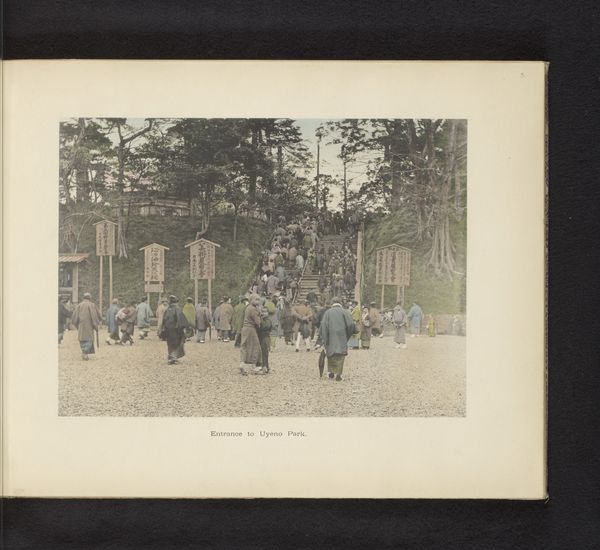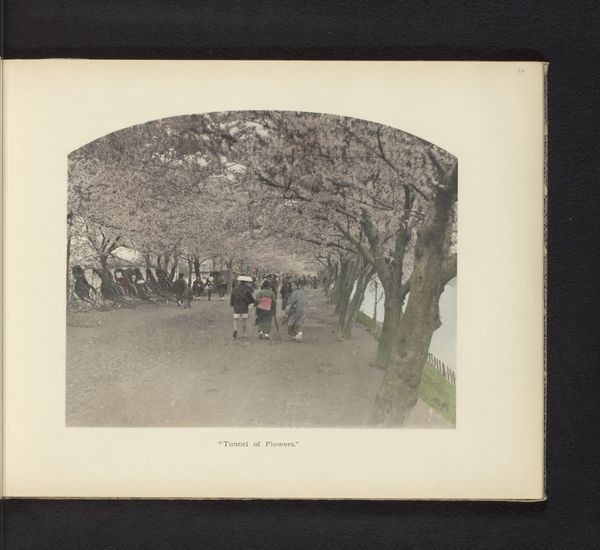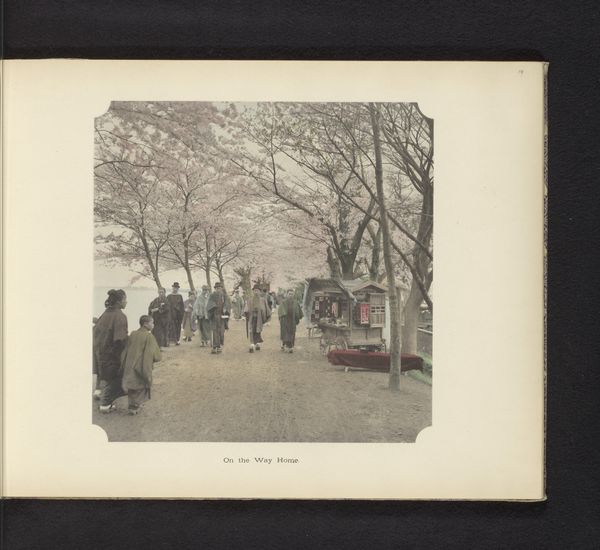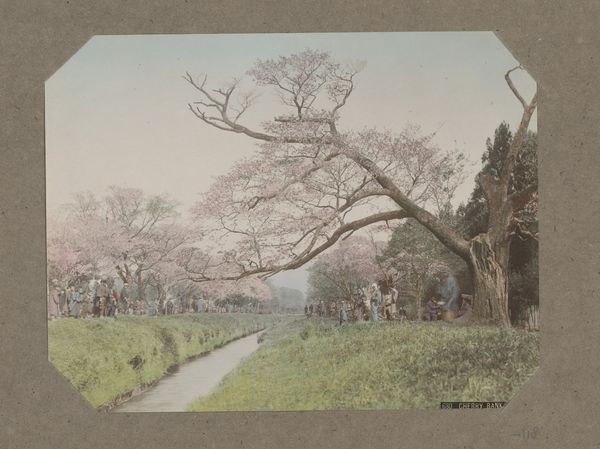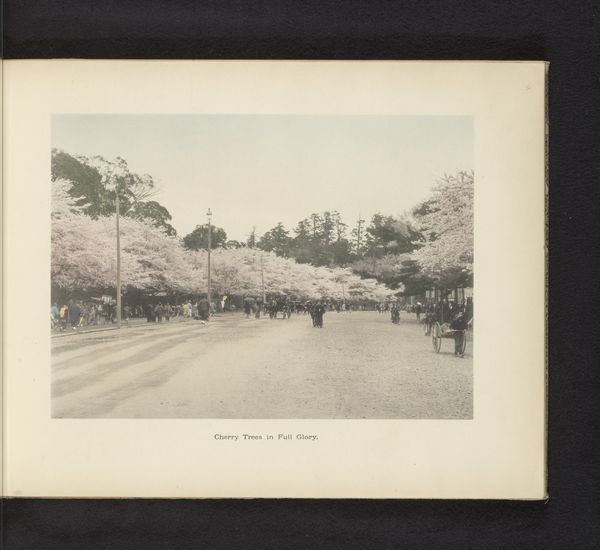
Gezicht op een laan met Japanse sierkersen in Uenopark in Tokyo, Japan before 1897
0:00
0:00
print, photography
# print
#
landscape
#
photography
Dimensions: height 193 mm, width 256 mm
Copyright: Rijks Museum: Open Domain
Curator: This photograph captures a street in Tokyo, Japan lined with cherry blossom trees. The title is, "Gezicht op een laan met Japanse sierkersen in Uenopark in Tokyo, Japan," and it was taken by Kazumasa Ogawa sometime before 1897. It’s a gelatin-silver print, a testament to the fusion of art and technology of the time. Editor: What strikes me first is the delicate balance between the dense canopy of blossoms and the purposeful human activity below. There’s a compelling interplay between light and shadow created by the trees. Curator: Ogawa was a pivotal figure, wasn’t he, straddling that fascinating line between tradition and modernity in Meiji-era Japan? The cherry blossom, of course, is so much more than just a pretty flower. It’s loaded with cultural significance—renewal, but also the ephemerality of life. There's almost an inherent melancholy. Editor: Melancholy, yes, but also structure. See how the verticality of the trees’ trunks anchors the composition, dividing the scene almost mathematically. The light seems almost staged, carefully orchestrated. Curator: Exactly, and this kind of image, disseminated widely through prints, profoundly shaped Western perceptions of Japan. You know, it perpetuated both romantic fantasies and served as a vehicle for understanding a rapidly changing society. Japonisme as a lens through which cultural exchange flourished. Editor: But also simplified, perhaps. There’s a risk of exoticization inherent in how it isolates a culturally significant detail such as cherry blossoms. Still, the artist's treatment is striking. It anticipates Pictorialism with that very gentle focus, with what you rightly point out is so careful attention to the control of light, a feature of painting tradition at this time. Curator: Absolutely. Though these photographs were in part documentary, they also contributed heavily to an idea of Japanese identity. The figures strolling almost disappear underneath the blooms, subsumed by the symbolism. The scene itself becomes a carefully constructed statement. Editor: It feels somewhat constructed now that you say so, rather than totally spontaneous. Considering that interplay between form and the suggestion of symbolism has actually reshaped my perception of this image in just a few minutes! Curator: For me as well. It's always an intricate task teasing out those layers.
Comments
No comments
Be the first to comment and join the conversation on the ultimate creative platform.
